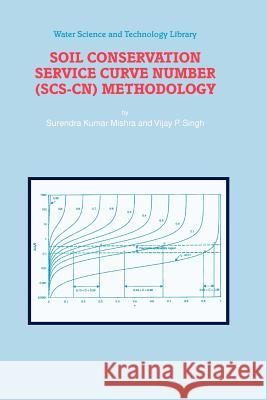Soil Conservation Service Curve Number (Scs-Cn) Methodology » książka
Soil Conservation Service Curve Number (Scs-Cn) Methodology
ISBN-13: 9789048162253 / Angielski / Miękka / 2010 / 516 str.
Recent contributions have significantly enhanced the understanding of the SCS-CN method and consequently its application potential. In the simplest form, the fundamental proportionality concept of the method relates the two orthogonal hydrological processes of surface water and ground water and the other hypothesis relates to the atmospheric process. Qualitatively, the method broadly integrates all the three major processes of the hydrologic cycle; and therefore it can form one of the fundamental concepts of hydrology. This textbook is aimed at presenting an up-to-date account of the SCS-CN method and clarify its potential for practical applications, and especially those other than originally intended.
The subject matter of the book is divided into nine chapters, treating the following topics: a brief introduction of rainfall-runoff modeling and elements of catchment, precipitation, interception, surface detention and depression storage, evaporation, infiltration, runoff, and the runoff hydrograph; the factors affecting the curve number (CN), the determination of CN, the use of NEH-4 tables, sensitivity analysis, advantages and limitations of the SCS-CN method, and application to distributed watershed modeling; an analytical derivation of the SCS-CN method focusing on the Mockus and other methods; a determination of S' using the volumetric concept encompassing an analytical derivation, verification of the existing AMC criteria, determination of S, use of NEH-4 tables and advantages and limitations of the modified model; the determination of S' using physical principles, involving Fokker-Planck equation of infiltration, description of S, S/P relations for the modified model and determination of Ds from universal soil loss equation; simulation of infiltration and runoff hydrographs, with particular emphasis on SCS-CN-based infiltration and runoff models and application of infiltration and runoff models; long-term hydrologic simulation and hydrologic models of Williams and LaSeur, Hawkins, Pandit and Gopalkrishnan, and Mishra and others; rainfall-excess computation, soil moisture budgeting, catchment routing, and baseflow computation; transport of pollutants in urban watersheds; and sediment yield.
Audience: This volume will be of interest to agricultural scientists, agricultural and civil engineers, environmental engineers, forest and range scientists, as well as watershed managers. It will also be useful to college students and faculty members engaged in environment and water related studies.











